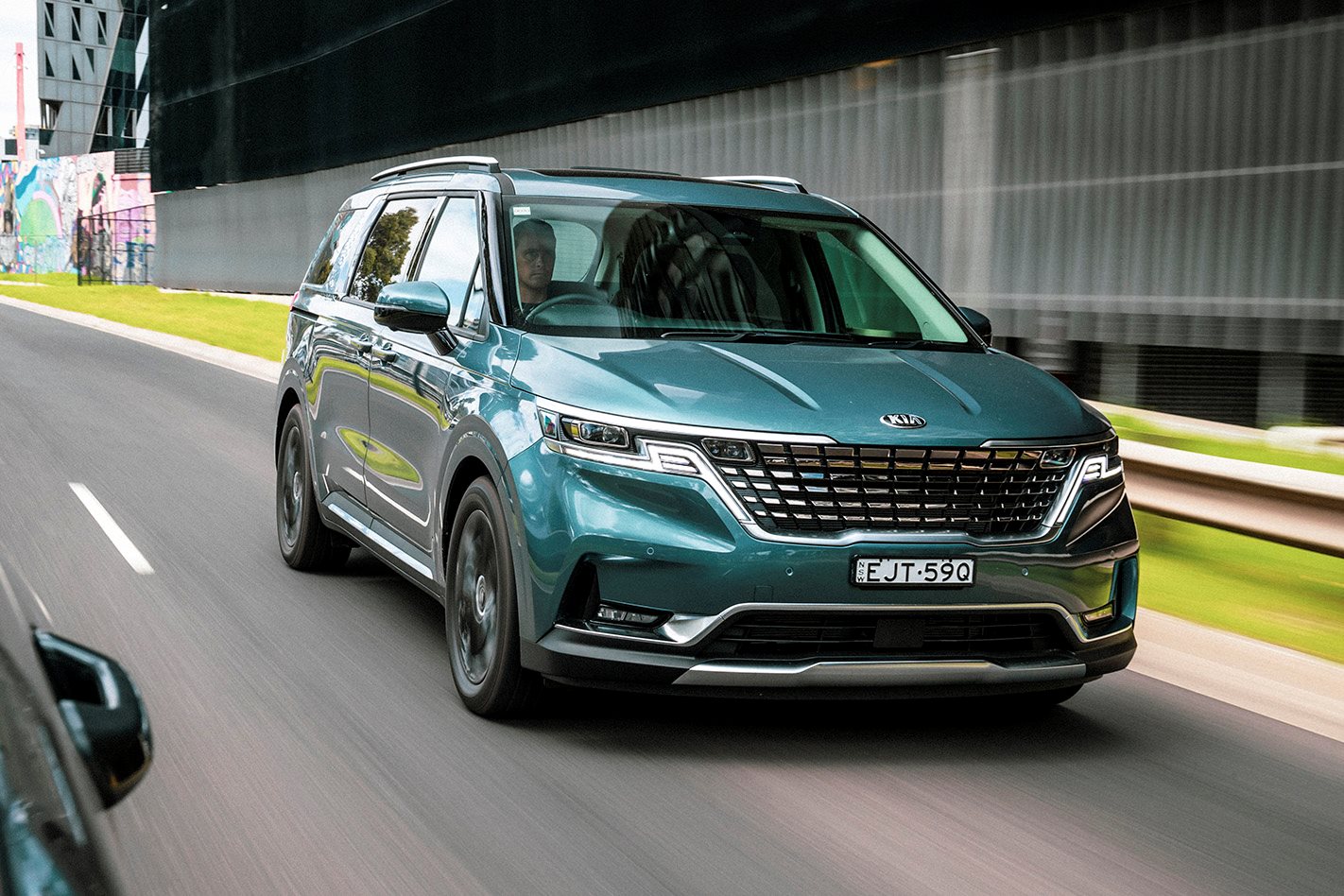
What is the Kia Carnival Platinum 3.5L Petrol?
This is the priciest petrol version of Australia’s biggest-selling people mover that continues to salute the crowd in a tight race that includes the likes of the Honda Odyssey, Hyundai iMax, and Volkswagen Mulitivan, while also being a worthwhile alternative to three-row SUVs.
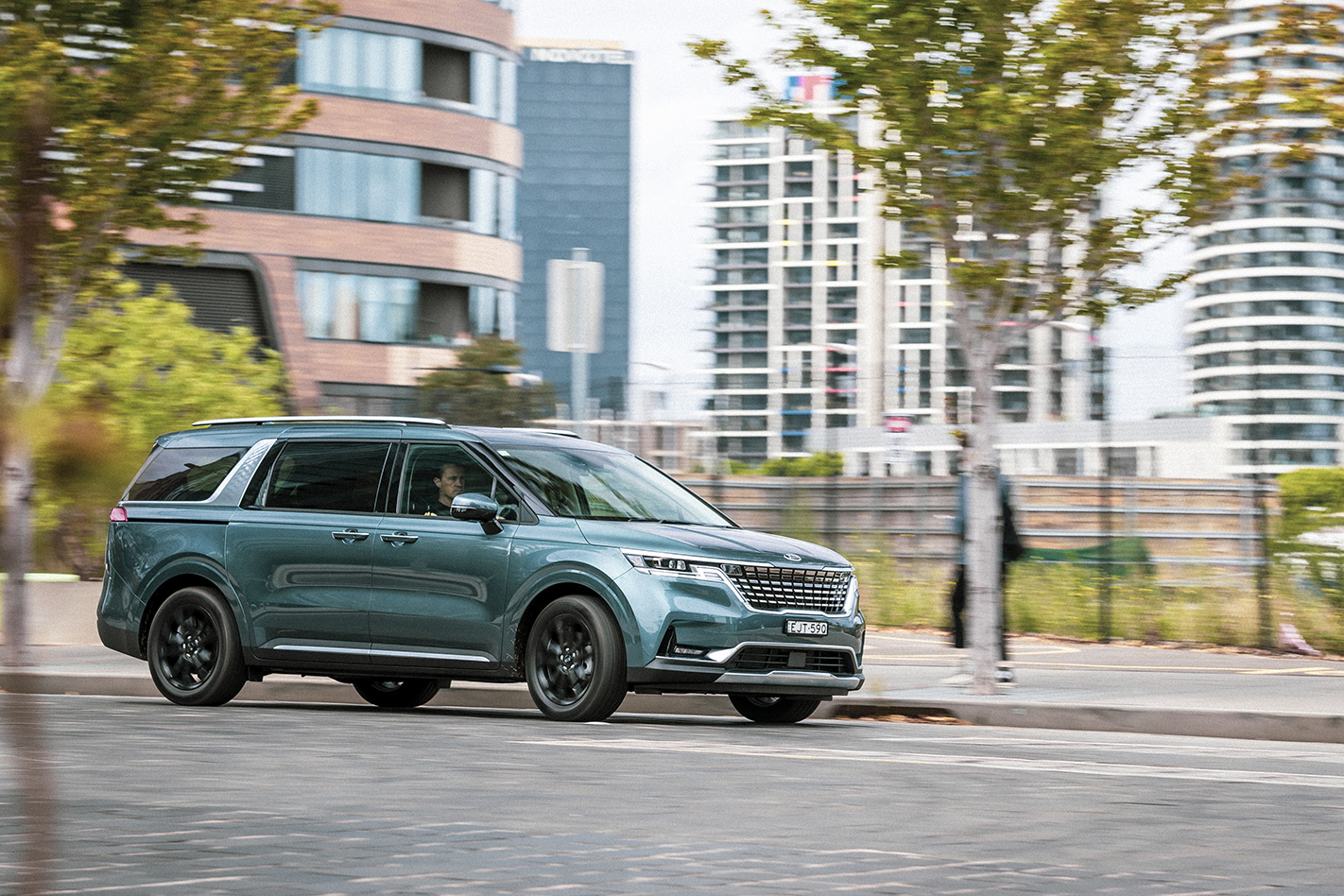
A genuine eight-seater, the 2021 Carnival is an all-new model that carries over everything good from the previous model but adds space, features and tech, and a sharper look that shoots down the ‘boring people-mover’ cliché.
Powered by a 3.5-litre V6 engine coupled with an eight-speed automatic transmission, the penultimate variant in the Carnival range is priced at $64,680 or $67,990 driveaway – second to the diesel-powered Platinum that attracts a $2000 premium but is otherwise identically equipped.
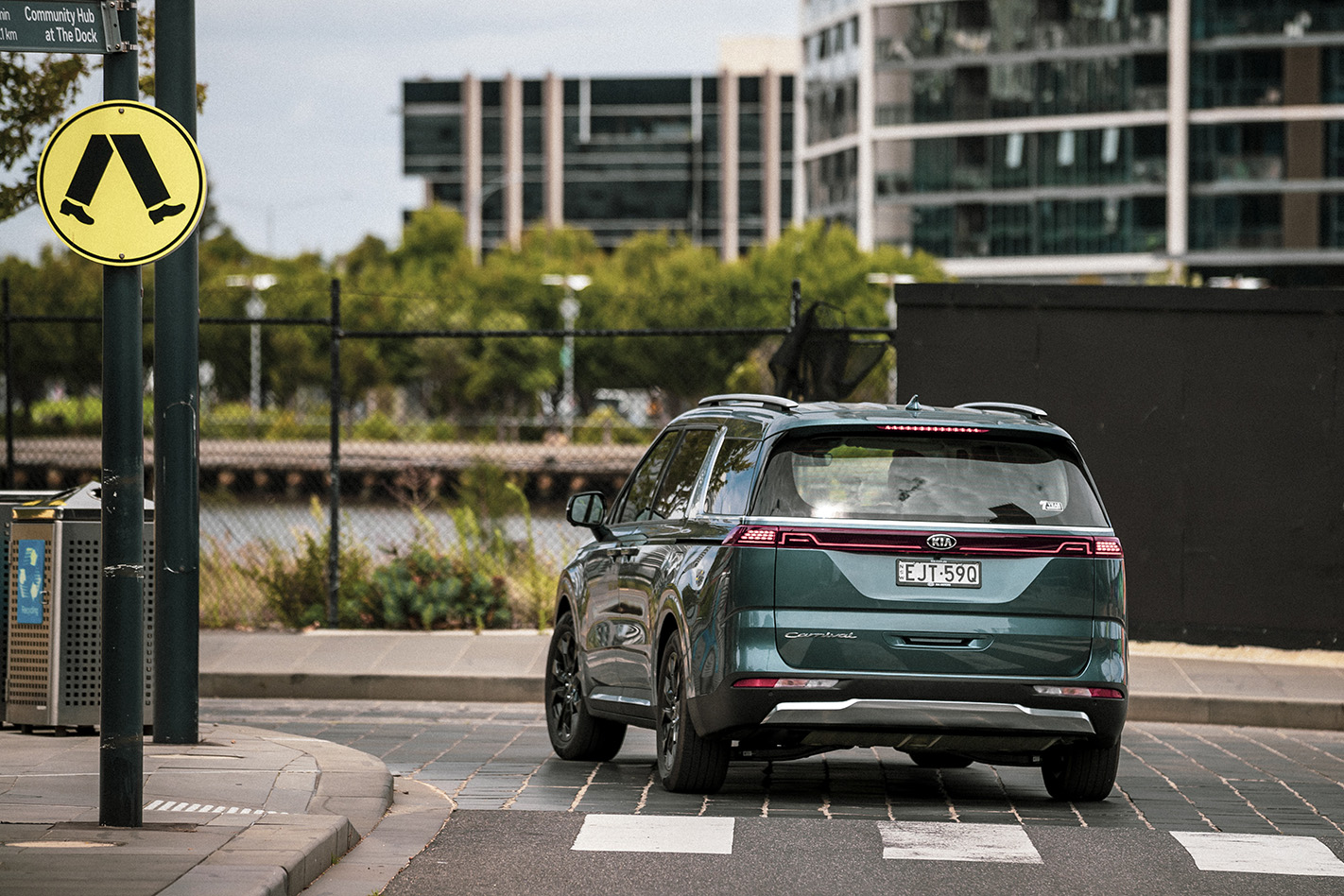
Both cost $18,000 more than their entry-level S versions that are the darling of rental companies, with more bells and whistles added as you move up the range to the Si and SLi, whose petrol versions cost $52,380 and $56,880 respectively.
Comparing the Platinum spec with the other versions it’s easy to see what the extra money brings you and it’s sub-$70,000 driveaway price compares well to similarly equipped three-row SUVs that lack the Carnival’s broader practicality.
What’s the Kia Carnival Platinum 3.5L Petrol like to live with?
When my daughter was about nine years old, she had a pathological hatred for the early-model Kia Carnivals. To be fair they weren’t exactly the epitome of elegant vehicle design, though that changed with the sleeker third-generation Carnival that shifted how people viewed people movers. But still, my daughter was unimpressed.
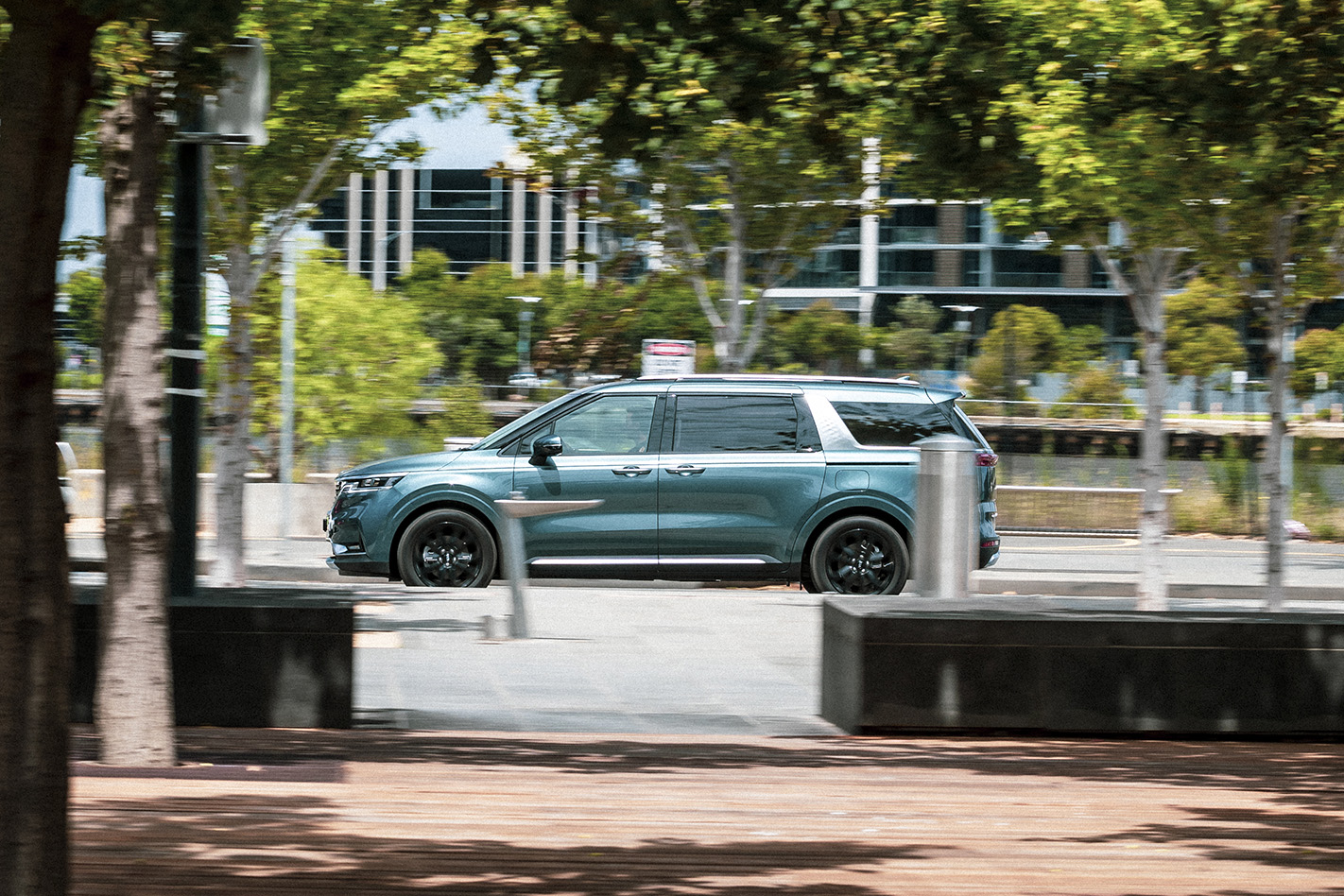
The fourth-generation Carnival has taken the sharp aesthetic even further and when I picked up this review car with its signature Astra Blue paint I took a side profile pic and texted it to her and wrote: “Remember how you used to hate the Kia Carnival”.
“No way! I don’t believe it,” she responded in an uncharacteristically prompt fashion. “Did they get the Range Rover guy in or something?”
She actually makes a good point; there are elements in the new design, including the forward-facing metallic D-pillar, gloss-black 19-inch rims, and the distinctive wrap-around daytime running light signature, that make it look like a squat Rangey.
That said, the front-end manages to be even more audacious than Land Rover’s finest, with lots of chrome and lights scattered about a gaping concave grille that looks like it can track satellites. It shouldn’t work, but it does.
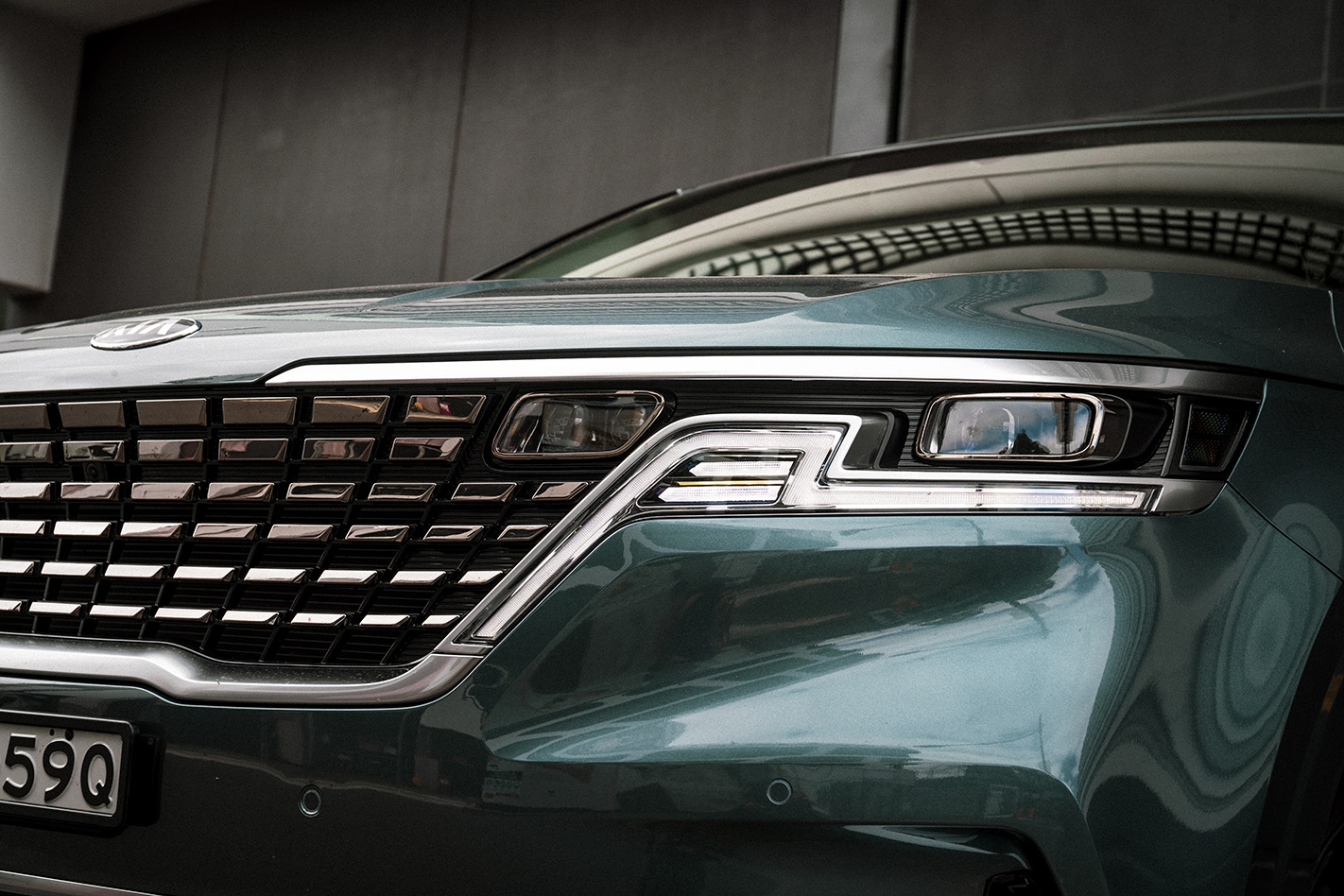
Anyway, this is my convoluted way of saying that, if you pulled into your driveway with this, your neighbours, and my eldest daughter, will express envy rather than concern that you’ve given up on life as they would have a decade ago.
Yes, looks are subjective but I’m yet to meet anyone who reckons the new bold-looking Kia Carnival, which is unashamedly designed for the US market, is unattractive.
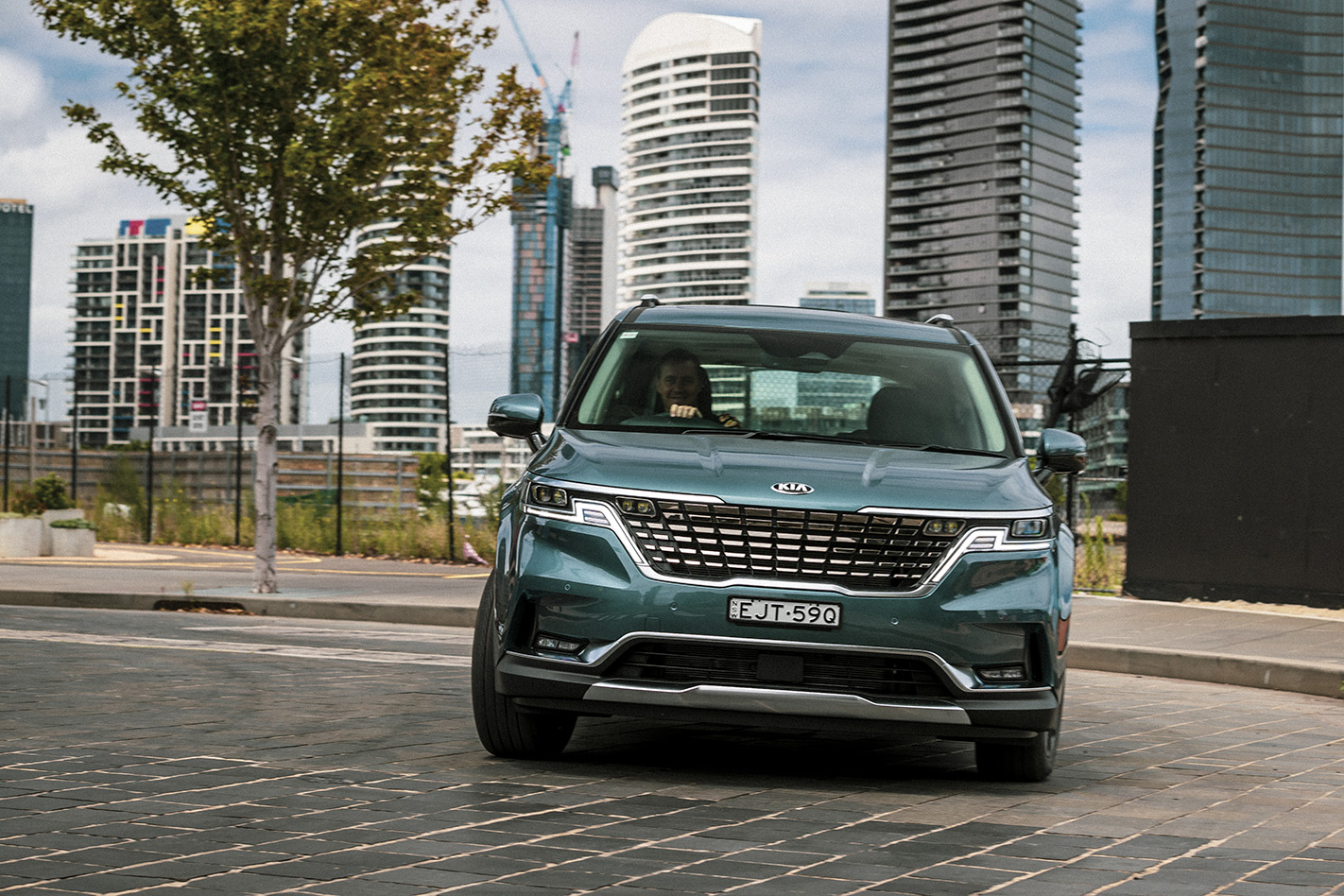
However, quite a few people expressed concerns about the Carnival’s size and how that relates to parking.
At 5.12m long (33cm less than Ford Ranger dual-cab ute) and 2.0m wide, the Carnival can be a challenge to park. But you get used to it with the help of front parking sensors, a reversing camera with guidelines and a 360-degree parking monitor.
Space and seats
On the plus side, the Carnival’s 10.2 square-metre shell accommodates a myriad of practical and comfort advantages over large SUVs, not least the spacious leather-appointed third-row seats that fit up to three people.
Okay, three adults would be quite a squeeze but you’d have no trouble fitting three children, while two average-sized adults will be happy enough.

Unlike most seven- or eight-seat SUVs, where the third row is the place to banish the least senior occupants, the back of the Carnival feels quite inclusive with good front and side vision.
There is even a two-way microphone and speaker voice amplifying system that allows mum or dad to say “if I have to come down there…” without yelling, while a dedicated camera allows the front row occupants to check on the kids down back without having to turn their heads.
Third-row passengers are also looked after with their own ceiling-mounted air-conditioning vents, cup holders, small storage bins, LED reading lights and a USB socket on each side. The reclinable backrests have pop-up headrests and legroom is good, helped by the fact the second-row seats can slide back and forth.
Headroom is a little compromised by the rear sunroof that, on the plus side, adds to the airy feel back there. The second row is even more spacious and also seats three, with the middle seat typically best suited for little people.
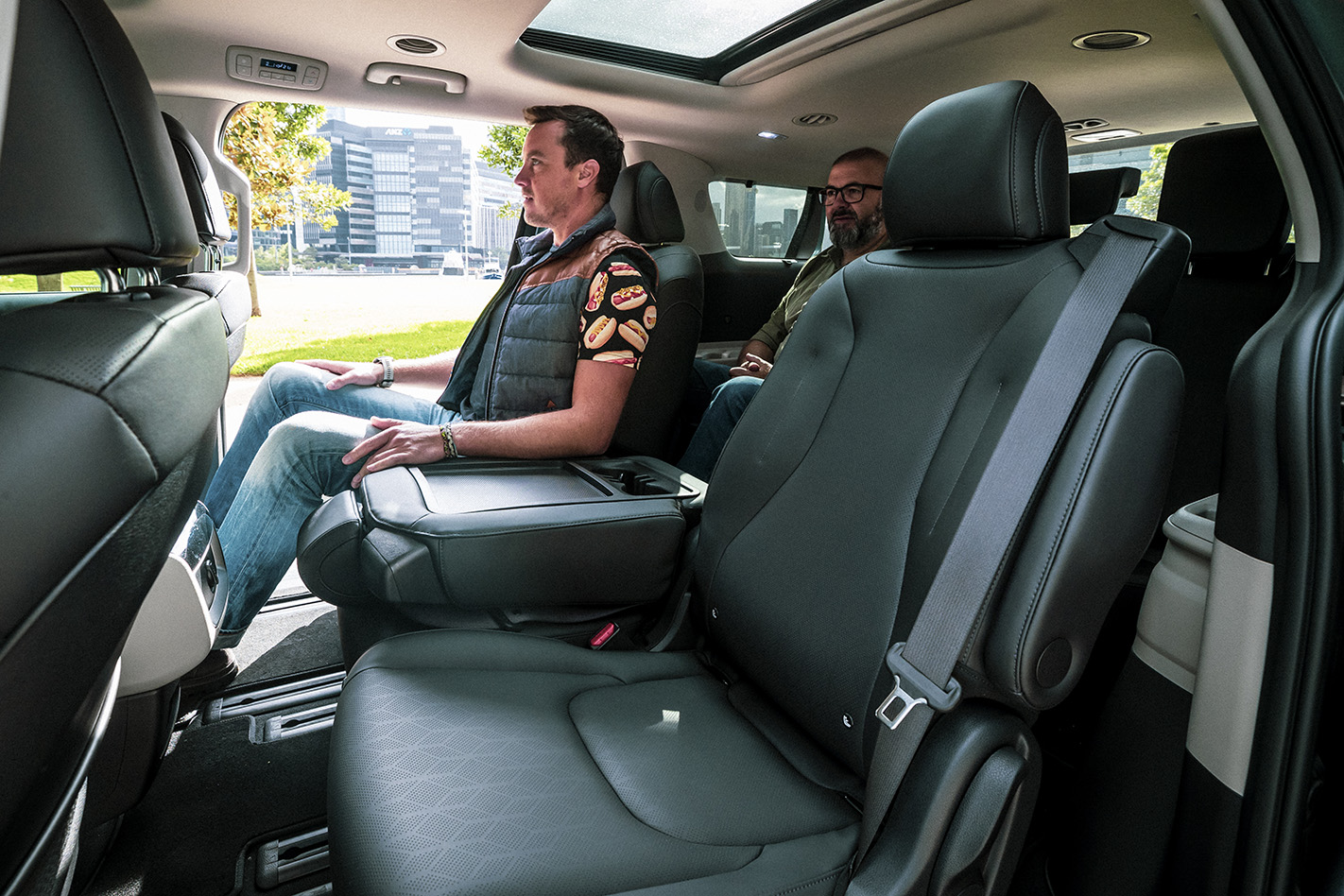
The middle seatback folds down to become a handy table with two cup holders, and the seats can also face rearwards for club-seating configuration, though it’s worth noting that in Australia this position would make them unsuitable for accommodating a child seat or capsule.
Second-row passengers also benefit from four more cup holders (two in the centre console and one on each sliding door trim), digital third-zone air-conditioning controls, ceiling vents, heated seats, USB sockets mounted on the side of the front seats, LED reading lights, and map pockets.
This is a very good car to be a passenger in, but the driver and front-seat passenger don’t miss out on creature comforts, which include heated and ventilated seats, dual-zone air-conditioning, wireless phone charger, and three USB sockets.

The driver’s seat has 12-power adjustments including four-way lumbar support and the passenger seat has eight power settings.
Other features include a cinematic 12.3-inch touchscreen that melds into the instrument cluster under a single pane of glass the spans more than half the width of the cabin.
The infotainment it displays comprises the now-standard Android Auto and Apple CarPlay connectivity and Kia’s own Kia Live services, while two smartphones or devices can be connected via Bluetooth at the same time.

There is also satellite navigation with 10-years free traffic information and map updates, and digital radio played through a 12-speaker BOSE surround-sound audio system.
Other Platinum-spec bells and whistles include a heated steering wheel and power-operated sliding side doors and tailgate.
A notable exception is rain-sensing windscreen wipers, which Kia claims was due to COVID-driven production delays. The cabin itself is well put together and has a premium European feel to it.
Cargo space
You get a sense that Kia’s designers have consulted with actual people-mover owners to ensure its form doesn’t impede function.
Entry to the third row is helped by the middle seats moving forward and their backrests tilting forwards by operating a single handle.
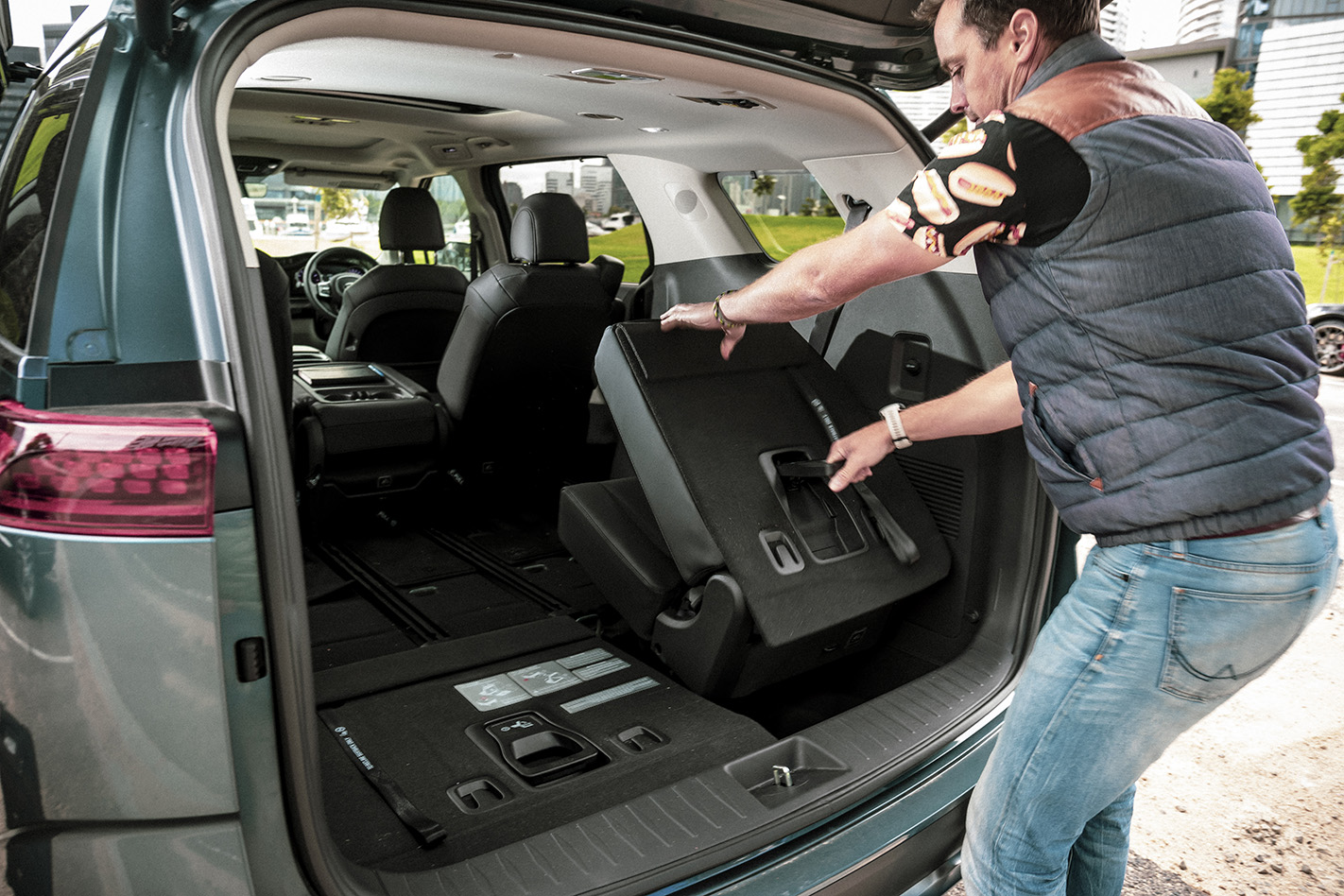
Meanwhile, the 60:40 split rear seats cleverly fold into the floor with a simple action using handles easily reached from the back.
This brings us to boot space; one of the Carnival’s most impressive features.
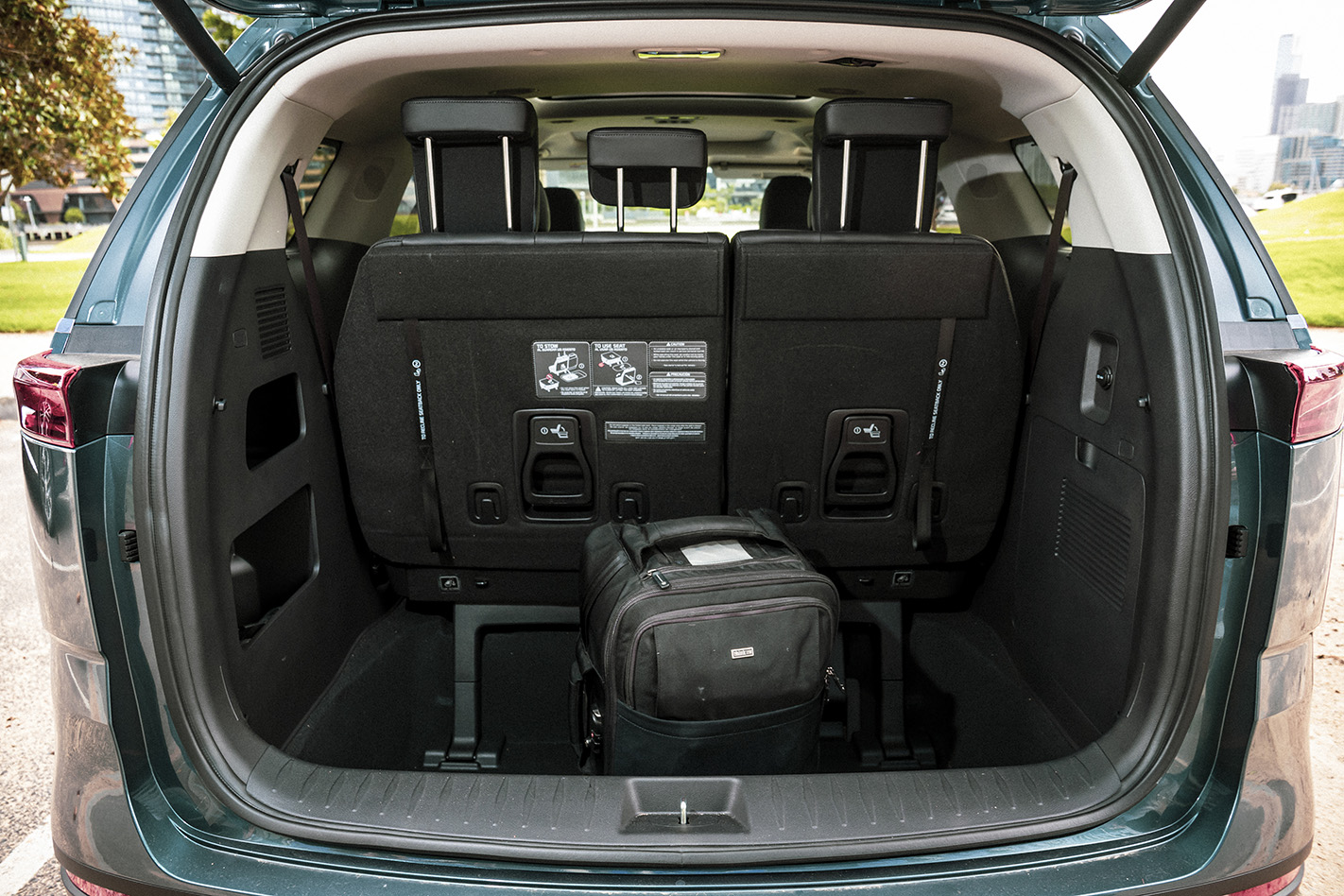
Unlike most three-row SUVs, it can carry up to eight people on a long trip and fit their luggage in the boot. With all three rows in use the boot can house 627 litres (VDA), which features a deep tub that allows for several suitcases to be stacked or stood side by side.
Fold the third row down to a five-seat configuration and you end up with a cavernous 2785 litres.
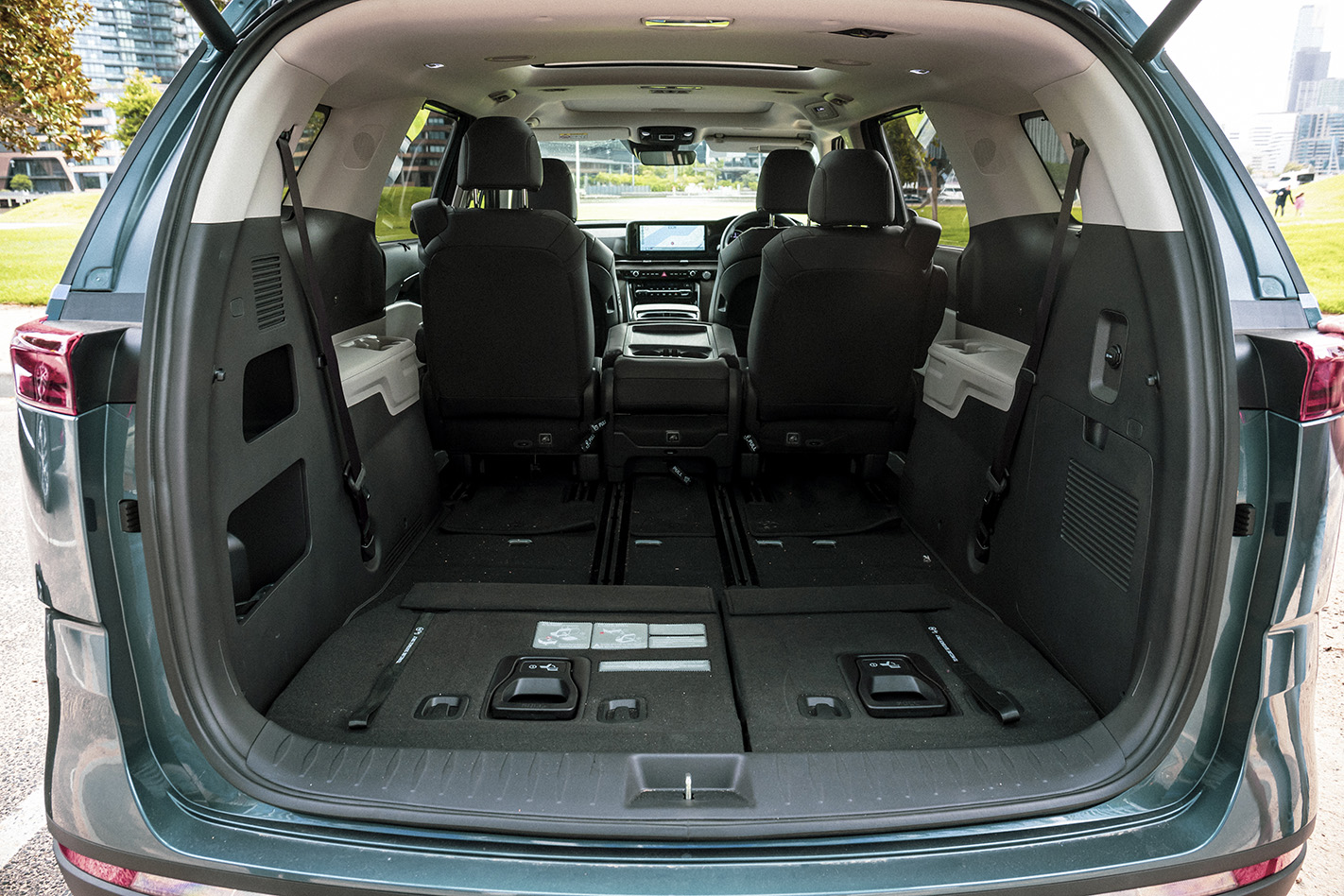
Push the second-row seats forwards and the Carnival becomes a van with enough room to fit boxes or furniture up to about 1.7m long.
I had to dispose of a huge 2.5m by 1.9m Ikea sofa bed with chaise that broke up to several 1.5m long modules and had no trouble fitting it all.
If you should require a trailer, all Carnival versions have a handy 2000kg braked towing capacity.
So what is the Kia Carnival Platinum 3.5L Petrol like to drive?
You’d think a vehicle designed to provide the space and practicality of a small bus or truck would drive accordingly, but the Carnival actually feels like a luxury car, with a smooth and quiet ride.
While it doesn’t have the ride height that SUV buyers seek, it offers excellent forward vision over the stumpy bonnet.
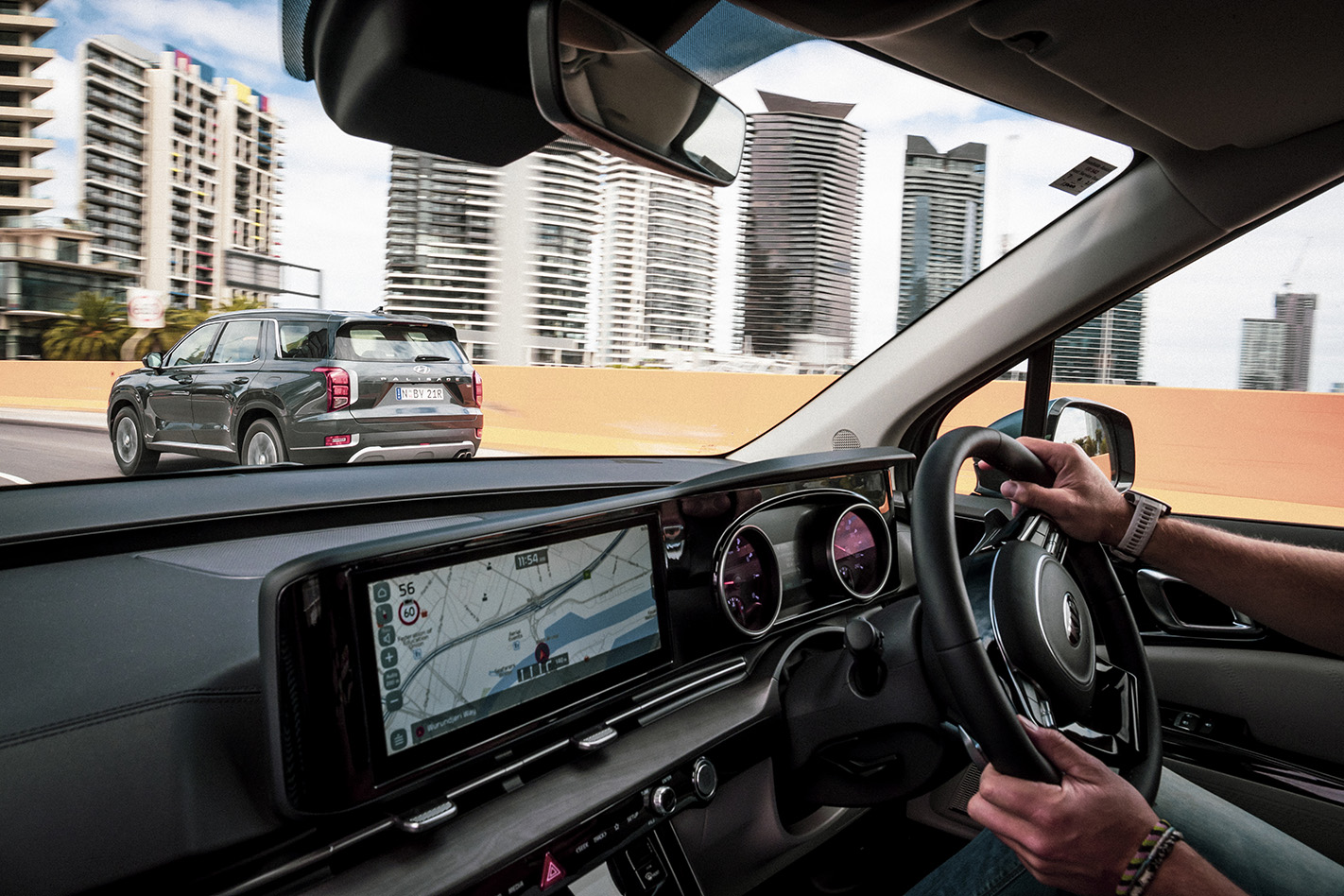
The new 216kW/355Nm 3.5-litre V6 petrol engine offers significant improvements over the 206kW/336Nm 3.3-litre in the previous model.
It is noticeably more refined and while it’s not breathtakingly quick off the mark, the additional power and torque allow for a smoother take-off. Once you get going it pulls the Carnival’s 2.1-tonne heft along with little effort.
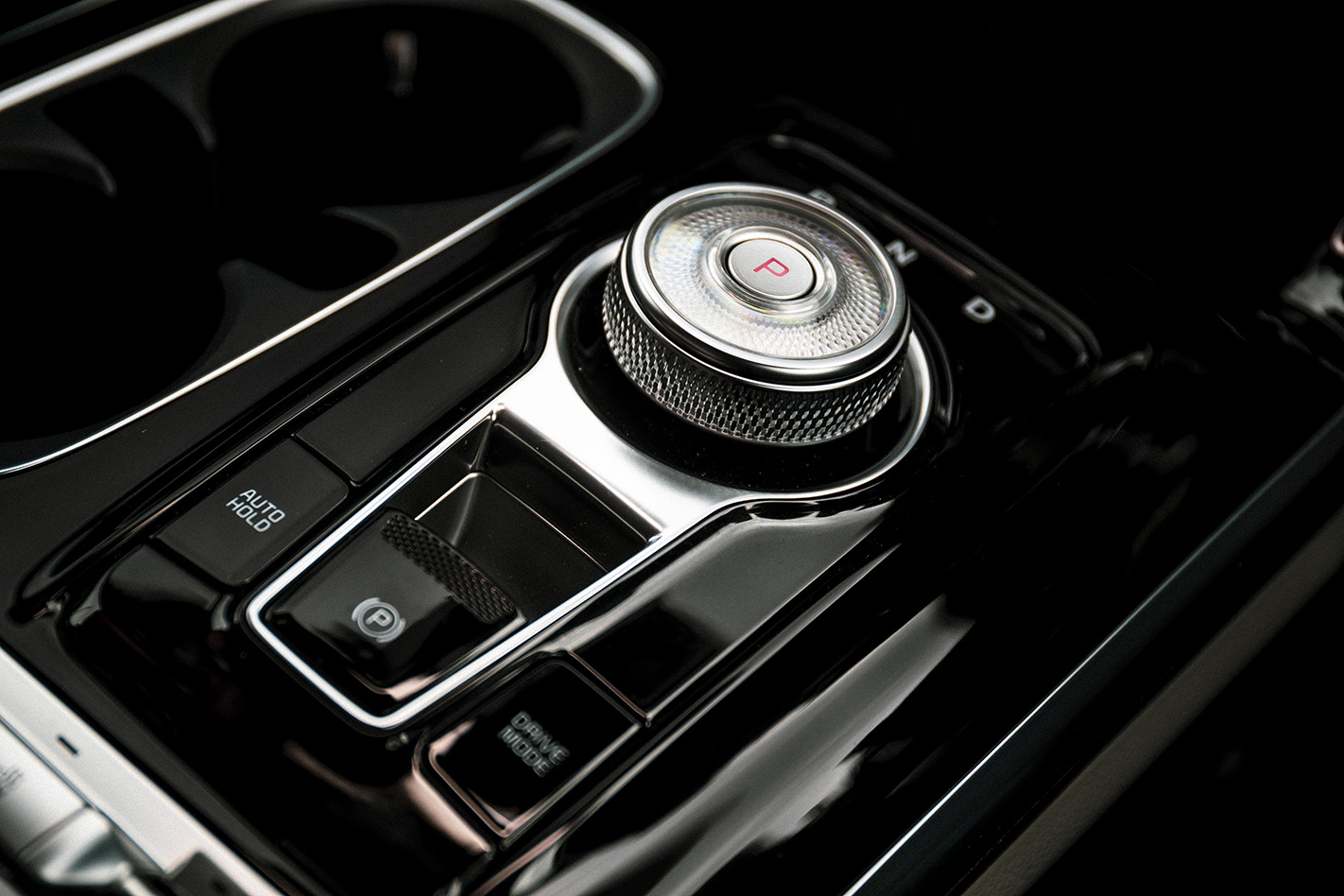
Coupled with an eight-speed automatic transmission that’s controlled by an attractive rotary shifter from the Genesis parts bin, the new V6 engine sends power to the front wheels (there is no AWD Carnival option) and has an official combined fuel consumption of 9.6L/100km, about 10 percent less than its lesser-powered predecessor.
During my time in the Carnival, I averaged 10.8L/100km with a mix of urban and freeway driving. By comparison, the 148kW/440Nm turbo-diesel Carnival consumes about 6.5L/100km.
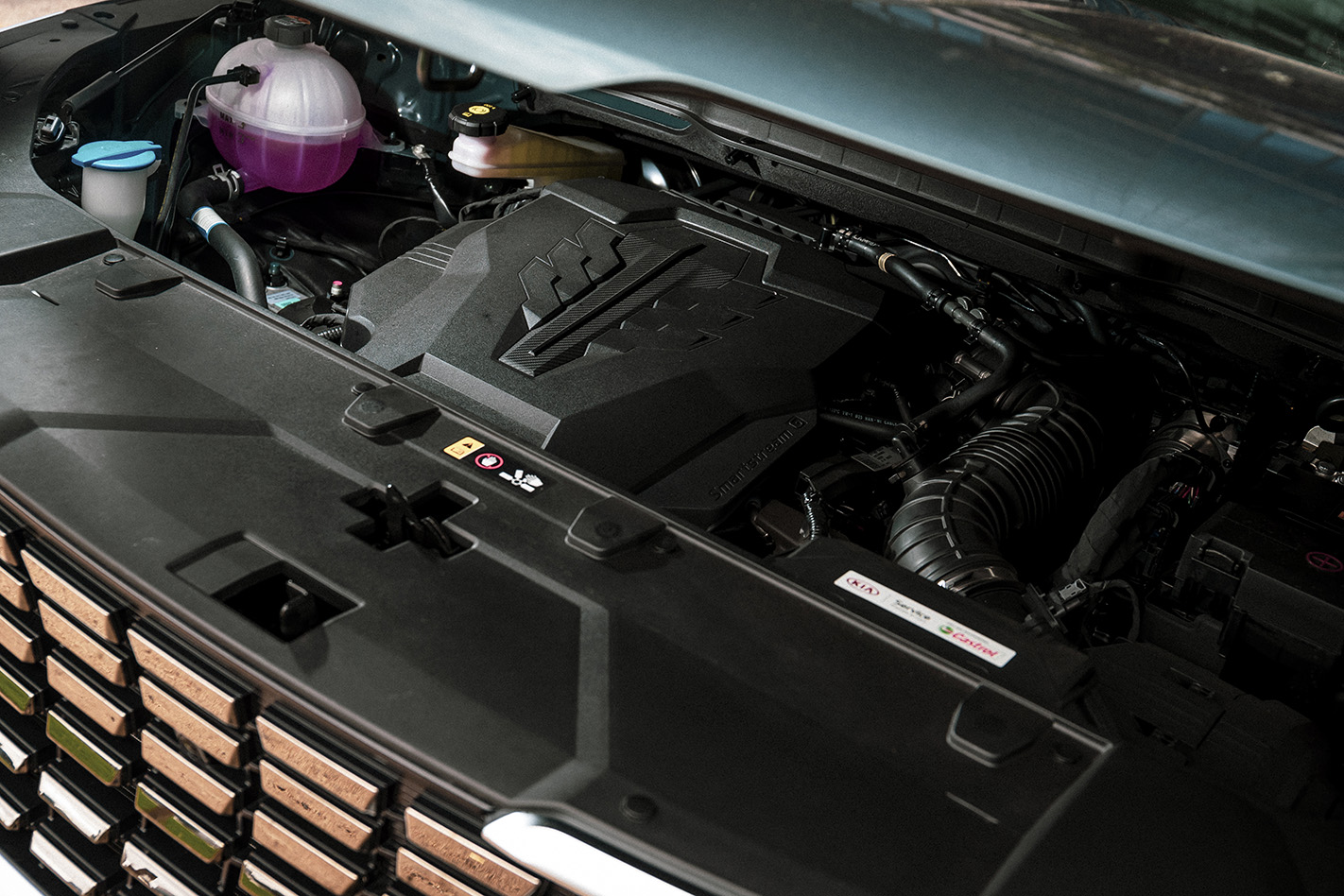
Built on a new platform, the 2021 Carnival’s ride and handling are also considerably improved, in large part due to the revised fully independent suspension that has been tuned for Australian conditions.
It rides on the 235/55 R19 Continental Crosscontact RX rubber with poise, which is particularly appreciated by those sitting above the rear wheels.
Handling also feels lighter and more responsive with the Carnival now equipped with electric power steering instead of the old mechanical power-assisted system.
How safe is the Kia Carnival Premium 3.5L Petrol?
The Carnival’s advanced driver assistance systems includes autonomous emergency braking with cyclist and pedestrian detection and will even brake if it detects another vehicle approaching from the side at an intersection.
It also has blind-spot monitoring, rear-cross traffic alert with auto braking, driver attention alert, following assist and lane departure warning.
Those last two automatically turn on and can be quite annoying when negotiating the 2.0-metre wide Carnival on narrow roads. It took me a while to work out you can turn off the lane departure alarm by holding the button down for a couple of seconds.
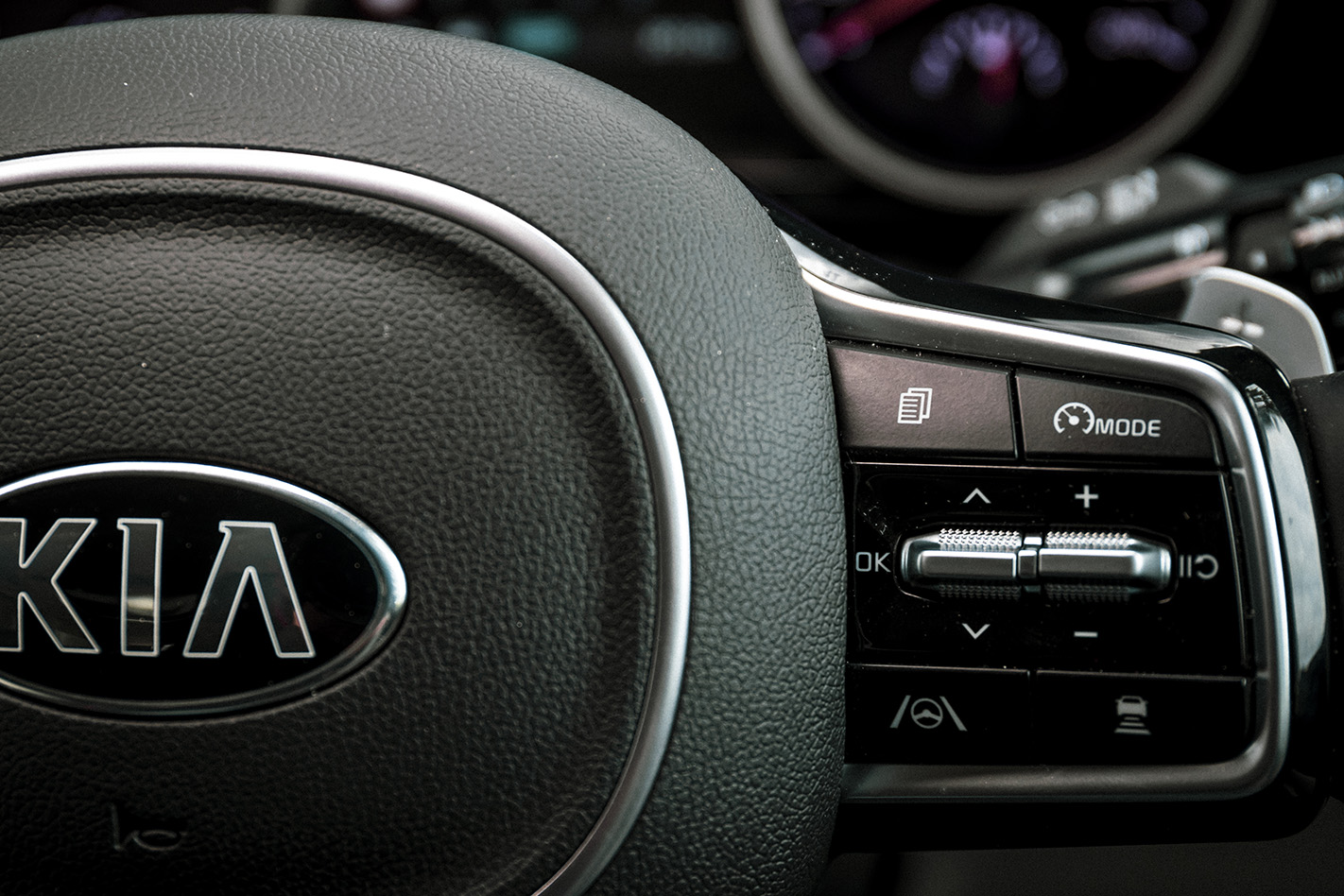
That said, the lane following assist works very smoothly with the smart adaptive cruise control.
Another irritation, and this is with all Kia and Hyundai vehicles, is the speed limit warning, which is often inaccurate – whatever you do, don’t depend on it if you want to avoid a speeding fine.
The Carnival has seven airbags: driver and front passenger front and side; driver’s knee; and curtain across all three rows. There are also five ISOFIX child-seat anchor points with top tethers, child-proof rear door locks and a door-open warning.
The 2021 Kia Carnival is yet to receive an ANCAP rating, but Kia is confident it will repeat its predecessor’s five-star rating.
The Verdict
I can’t believe how much Kia has fit into this Platinum spec for under $65,000. While built primarily for the US market it has a sophisticated European air about it, unlike American-built luxury cars that are a little obnoxious, albeit in a fun way.
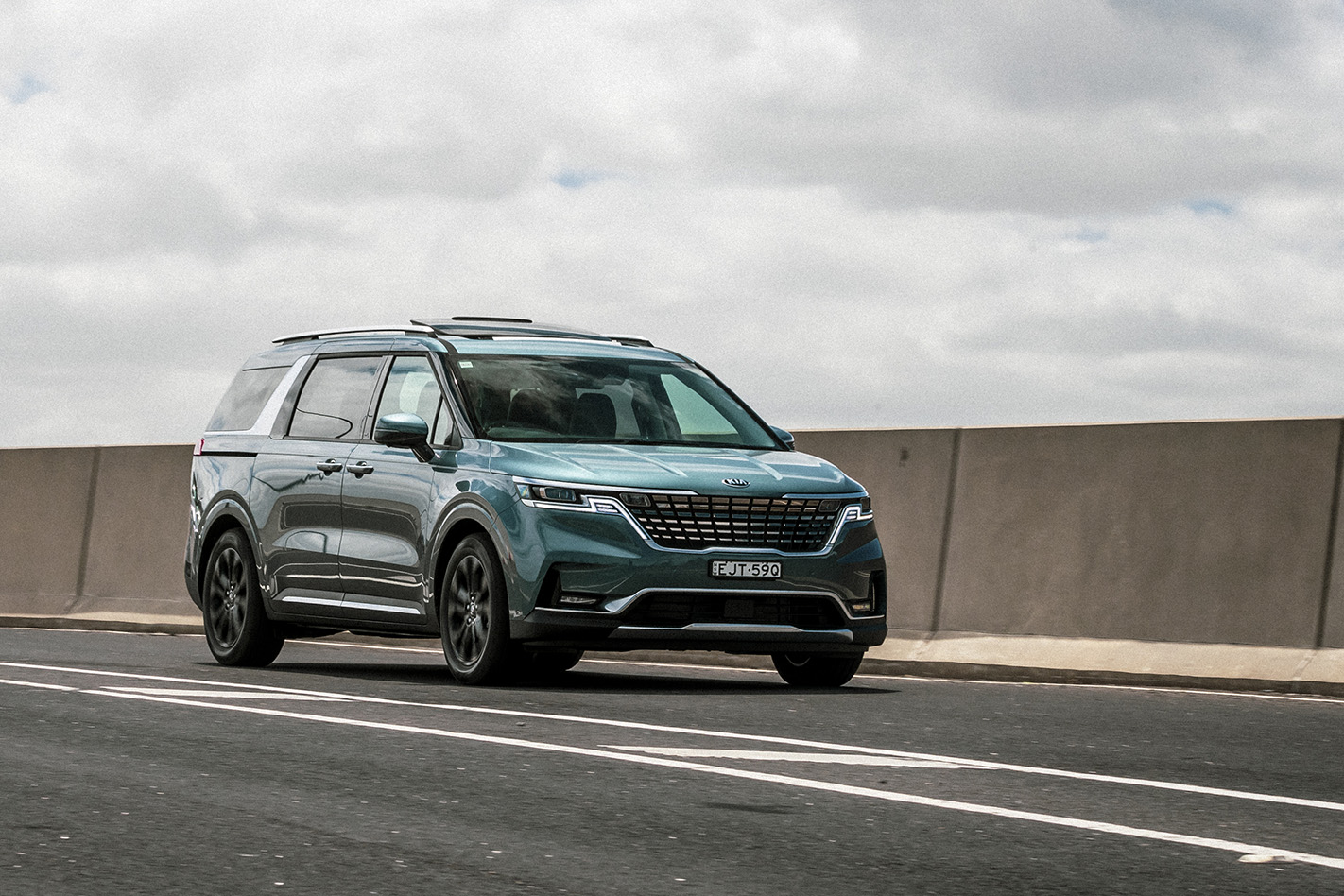
Like the previous model, I’d probably steer towards the diesel version. However, if its main mission will be as an urban shuttle rather than long-distance touring, the new V6 petrol is a far more compelling option than it was before.
As far as its rivals go, the Honda Odyssey, which Honda points out is more popular with private buyers, is the most obvious. However, the Carnival Platinum should also be on the list for anyone considering a pricier luxury-spec three-row SUV such as the Hyundai Palisade Highlander and Mazda CX-9 Azami, but want the boot space to go with the seats.
While the SUVs are a little more fashionable and offer all-wheel-drive traction, I’d be hard-pressed to find a reason not to seriously consider the Kia flagship.
Score: 8/10
Pros: Looks, space, comfort, cargo capacity, smooth ride, affordable luxury Cons: Petrol engine’s thirst, finding an excuse to justify eight seats, tight parking
Specifications
Price: $64,680 Engine 3.5-litre V6 petrol Transmission: 8-speed automatic Fuel consumption: 9.6L/100km combined Wheels: 235/55 R19 Weight: 2134kg Dimensions: L 5155mm x W 1995mm x H 1775mm – Wheelbase 3090mm ANCAP Safety: Not yet rated




